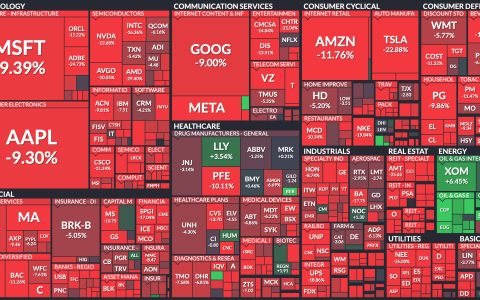
The Magnificent Seven (Microsoft, Apple, NVDIA, Amazon, Alphabet, Meta Platforms, and Tesla) and their respective growth have been a collective lightning rod for the financial press, with each of these stocks leading the broader market up and down at various points in time. We quantified the impact of the Magnificent Seven over the past 1-, 3- and 5-years by comparing the results of the Syntax US Large Cap 500 Index (Syntax 500)1 to what we refer to as the Syntax 493, an index model which excludes these seven companies. Exhibit 1 provides an overview of this custom index model’s construction.
Exhibit 1: Key Facts on the Construction of the Syntax 493 Index Model

Once the assumptions above are selected, the index model is constructed along with a backtest and key statistics. Exhibit 2 compares the growth of a hypothetical $1,000 investment over time for the Syntax 493 and the Syntax 500 benchmark. The two performed similarly from August 2019 until March 2020. After the initial drawdown associated with the COVID-19 pandemic, the Syntax 500 began to outperform the Syntax 493. The ending values for the Syntax 500 and Syntax 493 as of August 31, 2024, were $2,095 and $1,817, respectively.
Exhibit 2: Growth of $1,000 Investment for Syntax 493 vs. Syntax 500

Exhibit 3 below shows the trailing 1-, 3-, and 5-year results through August 31st. The Syntax 493 posted double digit returns over the past 1-year (+23.41%) and 5-years (+12.68%) but trailed the full Syntax 500 by 425 basis points over the past year, and by 326 basis points over the past 5-years.
Exhibit 3: Annualized Returns of Syntax 493 and Syntax 500

When the 5-year results are viewed through a cumulative lens, the Syntax 493 returned 81.7% compared to the Syntax 500’s 109.5%. Looked at differently, a hypothetical $1,000 invested in the Syntax 500 returned 34% more than the Syntax 493 due to the inclusion of the Magnificent Seven. Interestingly, the gap in performance was much less over the past three years, reflecting the market’s drawdown in 2022. The Syntax 493 returned 7.39% annually during this period, which was 132 basis points less than the Syntax 500.
As expected, the exclusion of the Magnificent Seven has a significant impact on the top 10 holdings.
Exhibit 4: Top 10 Holdings for Syntax 493 and Syntax 500

The Magnificent Seven claimed the top six spots in the Syntax 500 Index based on market cap percentage; Tesla is no longer a top 10 constituent as its ranking has fallen to 12th on the list.
To further this analysis, we created an index model consisting of only the Magnificent Seven. It should be noted that this index is purely hypothetical as our backtest goes back to August 2019, the term Magnificent Seven was not used until 2023 when Bank of America analyst Michael Hartnett used th name in when commenting on these seven firms.2
Exhibit 5 compares the Magnificent Seven index model’s performance to the Syntax 500. Over the past five years, a hypothetical $1,000 invested in the Magnificent Seven would have grown to an astonishing $3,760, which compares to the $2.095 for the Syntax 500. Over this 5-year period, the Magnificent Seven realized an annualized return of 30.3%, almost twice the Syntax 500 return of 15.9%.
Exhibit 5: Growth of $1,000 Investment for Syntax 500 vs. Magnificent Seven

The return pattern of the Magnificent Seven over the past five years has been more volatile on both the upside and downside, with an annualized standard deviation of 25.7%, which compares to 18.2% for the Syntax 500. This higher level of volatility is captured during the 2022 tech driven sell off and the subsequent rebound in 2023. In 2022, the Magnificent Seven were down -39.9% compared to -19.6% for the Syntax 500.
In 2023, this group of tech driven companies was up 75.9% compared to 27.1% for the Syntax 500. The return of the Magnificent Seven can be seen by their collective increase in market value. Exhibit 6 shows the group’s value was $4 trillion five years ago. Today, the group is collectively valued at more than $14 trillion. Apple and Microsoft each have a market cap of more than $3 trillion, NVIDIA is near that mark at $2.9 trillion. Alphabet represents $1.9 trillion, Amazon is $1.8 trillion, and Meta Platforms is $1.2 trillion. Tesla has the lowest valuation at roughly $600 billion.
Exhibit 6: Float Adjusted Market Cap of Magnificent Seven ($ Billions)

Exhibit 7 displays each company’s weight within the Magnificent Seven index model, weighted by float-adjusted market capitalization. Of note is the increase in NVIDIA, which grew from 2% in Q3 2019 to 19% in September 2024. Tesla at its peak in 2022 was 9% of the Magnificent Seven, it is now 4%. Microsoft and Apple have been the most consistent leaders within the group, with Microsoft’s weight ranging between 21% to 26%, and Apple between 20% and 30%. Apple is 23% and Microsoft is 21% as of the date our analysis was performed in September 2024.
Exhibit 7: Magnificent Seven Companies as % of Magnificent Seven Total Market Cap

Conclusion
The tremendous returns of the Magnificent Seven have received great attention. This paper demonstrates the impact of the Magnificent Seven on the large cap market and highlights their remarkable return of 30.3% per year over the past five years.
Much of the analysis in this paper was performed using Syntax Direct, our direct-to-index platform. In addition to its ability to create custom indices like the Syntax 493, the platform automatically creates a factsheet and an index rulebook for every index created. The index rulebook is a compliance-ready document that captures all the details and assumptions used to create an index. To learn more about Syntax Direct, please reach out to us at syntaxdata.com.



